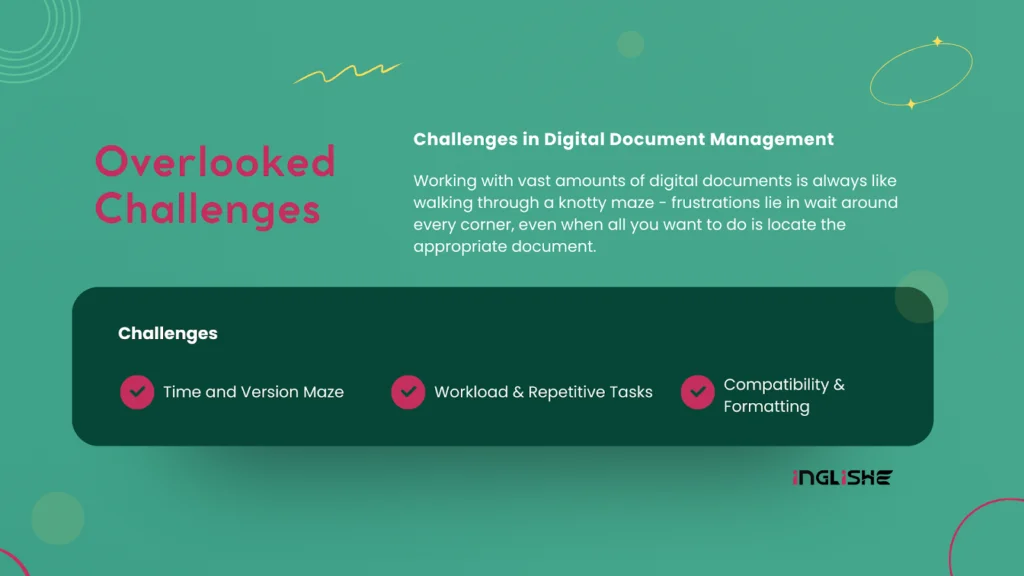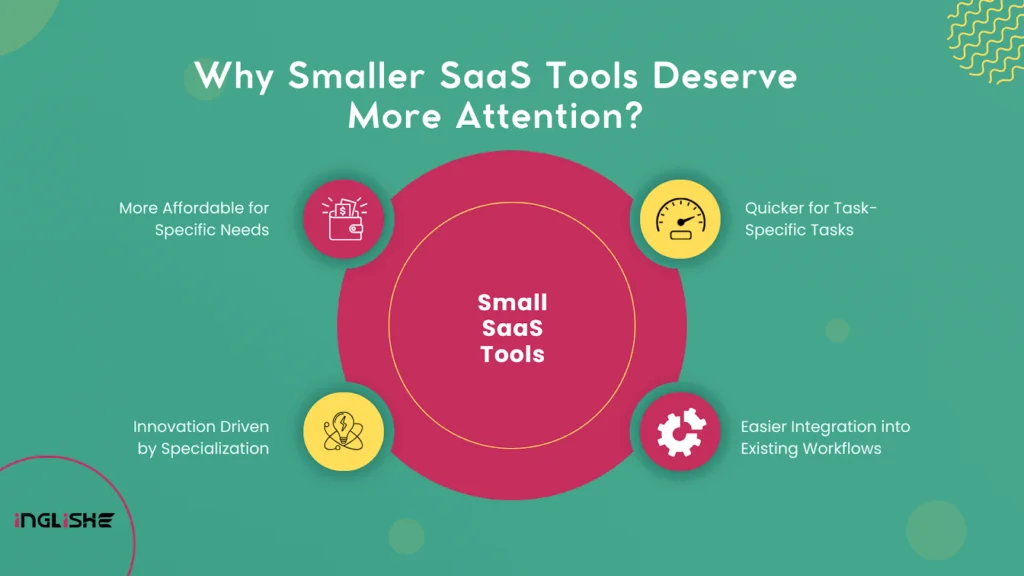Key Takeaways
- Poor document control wastes time and confuses.
- Manual tasks like merging files drain productivity.
- Format issues and scattered storage slow down work.
- Smaller tools are often more cost-effective.
- Lightweight tools integrate into workflows easily.
- They update features faster based on feedback.
- Simple design shortens learning curves.
In the year 2025, the mainstream SaaS ecosystem is brimming with barkers that won’t let a place go in the limelight. Rather, it ends up hogging all the media and funds for itself, pushing lesser-known counterparts that could be just as – if not more – efficient for a few applications. A lot of these underdog gems get ignored, not due to a lack of quality, but simply because all the noise about industry powerhouses silences them.
For working professionals who run digital workflows, the problem isn’t acquiring software – it’s acquiring the proper SaaS tools that do the job efficiently and without extra complication. The need for specialized, intuitive tools is on the increase, as users look for solutions that take friction out of tasks and don’t contribute to it.
One of these unsung solutions is iLovePDF 2 – a site that quietly goes about making life better for users who appreciate simplicity and efficiency. Although it won’t boast the same marketing visibility as bigger players, its no-nonsense functionalities and streamlined methodology tackle real issues busy professionals encounter daily.
Overlooked Challenges in Digital Document Management
Working with vast amounts of digital documents is always like walking through a knotty maze – frustrations lie in wait around every corner, even when all you want to do is locate the appropriate document.

1. Searching Time and Version Maze
An astonishing 73% of employees spend 1–3 hours a day just looking for information they must have in order to do their jobs, based on a McKinsey study on productivity in knowledge work.
When version control is not good, this issue is exacerbated – teams lose precious time verifying if they have the most recent document or inadvertently work on older files with wasted rework.
2. Manual Workload and Repetitive Tasks Suck Productivity
Repetitive file-related tasks like reformatting files by hand, format conversions, and combining large groups tend to consume the hours that could be spent on high-value work. They are a never-ending drain on attention if not automated or simplified tools, slowing down project completion and infuriating employees.
3. Compatibility and Formatting Aggravations
File format mismatches are still a frequent hindrance in cross-department work. Another PDF format is, for example, used by the finance department, while the marketing department will be sending files with a different format that then needs to go through more conversion processes. Just minor layout misalignments or slight text misalignment could cause delays in the approval process, and the result is unprofessional-looking documents.
Why Smaller SaaS Tools Deserve More Attention
These make it seem reneric and just fit for defaulting on it. They are advertised vigorously, churned from colleague mouths, and either offered in conjunction with popular other tools. This is not an enabling tendency; it often keeps people away from the more obscure-but-worthy tools that may, in specific contexts, offer similar or more benefits than their more mainstream counterparts.
More Affordable for Specific Needs
Big platforms bundle features, so you pay for functionalities that you don’t use. Small SaaS products, however, typically address a specific issue and charge accordingly. Such concentration can lead to the cost of subscription being lower and return on investment being better for organizations or individuals with limited needs.
Quicker for Task-Specific Tasks
Mainstream platforms often load users with broad feature sets, which can slow down navigation and execution. Instead, niche tools are designed for one process-their optimization on speed and simplicity. Lessening of steps on an already tight deadline is a negative situation affecting any organization that wants to do something productive.
Easier Integration into Existing Workflows
Since they’re light, smaller SaaS solutions generally integrate into current systems more cleanly. They sidestep the bulk of enterprise-grade systems and have less technical overhead to implement. This allows the teams to get started nearly instantly, without needing extensive onboarding or compatibility problems.
Innovation Driven by Specialization
Smaller SaaS competitors are generally nimble, so they can act more rapidly to user needs and deploy features that tackle specific emerging issues directly. Their concentration on specific issues is what fuels imagination and tends to lead to solutions more attuned to user needs than broad platforms.
My Struggle with Document Overload
As a project coordinator, I handled the day-to-day business of a steady inflow of contracts, invoices, and departmental reports in various formats-from scanned PDF files to editable documents. Most of these files came at different times and points of source and were cared for over the course of time, which became almost a logistical nightmare in terms of tracking file versions, whether there was anything misplaced, and producing consolidated reports for management review.
The absence of a structured process ensured that there were delays in approvals very often. If one document was incomplete or labelled incorrectly, the whole chain of communication ground to a halt, resulting in frequent follow-ups and wasted hours. The tension of keeping everything in place was as endemic as the workload.
The High-Pressure Scenario
One quarter, I was charged with preparing a detailed project performance report on various active contracts. The twist – it was to be assembled from more than 50 discrete documents supplied by varied groups, each having its own presentation and file type. The deadline was firm, and multiple stakeholders were waiting for this aggregated report to make strategic decisions.
Failures with Common Platforms
First, I resorted to the mainstream tools our organization already used. While these websites – each a powerhouse in its own right – were too slow or too complicated for such a simple task. Some took hours to upload, some continued to fail when files were too big, and a couple of them provided so many features that it became a project in and of itself just to navigate to the correct feature. Something that should have been easy became a series of technical obstacles.
Discovery of a More Efficient Solution
As I searched for an alternative, I stumbled upon a smaller, less-well-known SaaS solution with a specific, intense focus – swift, dependable document processing. I could combine multiple PDFs into one without the nagging interruptions I had faced previously. Rather than having to deal with individual files and risking missing something, I could have a single, structured document ready for review.
Integration into Daily Workflow
What impressed me was how seamlessly this tool integrated into my workflows. There was no onerous learning curve, no requirement for extensive onboarding, and it didn’t require heavy system utilization. With time, it became an automatic part of my document management workflow – enabling me to avoid backlogs and achieve consistent output, even with high volumes of work.
Why Under-the-Radar SaaS Tools Deserve Attention?

Market Saturation and the Visibility Challenge: The competition in the SaaS industry in 2025 is huge. Big, financially backed platforms fill search results, ads, and conferences, and it can be hard for smaller but useful tools to get noticed. Professionals default to established brands much of the time, neglecting to explore substitutes that could better meet their particular requirements.
Affordability Without Compromising Value: Most of the lesser-known SaaS applications function with leaner staff and minimal overhead, such that they can offer minimal competition on pricing. This can be a boon for startups, freelancers, and small to medium-sized businesses that would like rich functionality without having to pay the luxury tax found in big-brand licenses.
Innovation Through Agility: Smaller SaaS players update features more rapidly because they are not held back by long corporate approval pipelines. It takes them fast to respond to user feedback, iterating on functions in a shorter time, and filling niche requirements that bigger platforms do not attend to.
User-Centric Design for Niche Issues: Under-the-radar tools tend to be the result of a clear intuition of a particular issue. They are being created as a solution based on real-world usage cases and not general mass market appeal. Therefore, they are being crafted to address niche pain points effectively. This specialization leads to clean interfaces and workflows that decrease the new user learning curve.
Community-Driven Support and Feedback Loops: Such smaller SaaS applications are used by an interested community that usually provides feedback, which is more than likely to be taken into consideration for positive implementation. This feedback channel strengthens the guarantee that updates are driven by real-world challenges and not theoretical use cases.
Reducing Workflow Overload: By concentrating on excelling in a small number of things, these tools enable professionals to simplify their workflows. Rather than loading users with a large set of features, they emphasize performance, making them great teammates in an increasingly busy work environment.
Final Thoughts
These little SaaS tools are easily ignored, as their existence is overshadowed by giant platforms that silently, effectively, and accurately walk users through specific problem-solving. Digital workflows are becoming more complicated, and there comes a time when you have to pick a solution that has an exquisite fit for your particular needs. The hidden gems demonstrate that innovation is not always that which comes screaming from the loudest players in the market; it tends to resonate with those who keep their ears open to the user needs and provide a targeted and actionable answer. The capability to understand and leverage such tools could prove to be the deciding factor between languishing in inefficiencies or reaping constantly smooth operations in 2025 and beyond.



